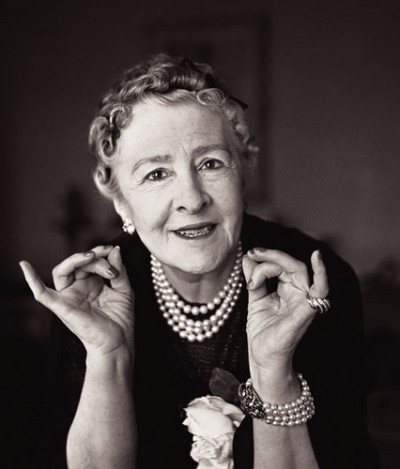Syrie Maugham (Gwendoline Maud Syrie Barnardo)

Gwendoline Maud Syrie Barnardo was born in England, a daughter of Thomas John Barnardo, the founder of the Barnardo’s charity for destitute children, and his wife, the former Sarah Louise “Syrie” Elmslie. In a career that lasted from 1922 until her death, Syrie Maugham became a legendary interior designer credited for designing the first all-white room. In the early 1910s, Maugham began her career by apprenticing in a London decorating firm to learn about furniture restoration, trompe-l’oeil, curtain design, and the mechanics of traditional upholstery. She established her own interior decorating business at the age of 42, Syrie LTD., at 85 Baker Street, London in 1922, and as her reputation grew, so did her business. She later opened shops in New York and Chicago, and designed homes in Palm Springs, California and cities all over the U.S. She was born during the Victorian era, a time characterized by dark colors and small spaces. Syrie rejected these norms to create rooms filled with light and furnished in multiple shades of white and mirrored screens. In addition to mirrored screens, her trademark pieces included: books covered in white vellum, cutlery with white porcelain handles, console tables with plaster palm-frond, shell, or dolphin bases, upholstered and fringed sleigh beds, fur carpets, dining chairs covered in white leather, and lamps of graduated glass balls. Maugham also started the trend of stripping and repainting French provincial antiques with a secret craquelure technique.
She is best-remembered for the music room at her house at 213 King’s Road in London and the salon at her villa at Le Touquet, a society resort in France. The music room was actually the only room designed in all white, but many other rooms were primarily white with accents of color in the draperies or pillows. The salon was decorated entirely in shades of beige, relieved only by pale pink satin curtains. Although she made her fortune and fame with her white decors, by the mid-1930s she had largely given up the white decors to create interiors with baroque accessories and color schemes punctuated by bright green, shocking pink, and bold reds. Cecil Beaton remembered leaf-emerald wallpaper, magenta cushions, and Schiaparelli pink. Maugham’s daughter Liza married in 1936, and the London house Maugham decorated for her was among her best work. After finishing it, she sold her own house and traveled to India with Elsie de Wolfe “to paint the Black Hole of Calcutta white”. Maugham continued decorating, but had already completed her most famous and successful work. Her clients included Wallis Simpson, Marie Tempest, Oveta Culp Hobby, DeWitt Wallace, Elsa Schiaparelli, Capt. Edward Molyneux, Edward James, Mona Williams, Babe Paley, Bunny Mellon, Clare Boothe Luce, Alfred Lunt/Lynn Fontanne, Margaret Campbell, Duchess of Argyll and the Hon. Stephen Tennant. She redecorated The Glen, Scottish home of Christopher Tennant, 2nd Baron Glenconner, who hated the existing Scottish Baronial style of the house.
In 1901, on a visit to Khartoum with her father, she met Henry Wellcome, an American-born British industrialist who had made his fortune in pharmaceuticals (his firm became Burroughs Wellcome). She was 22 and he was 48, and they married soon after. In 1903 they had a son, Henry Mounteney Wellcome. The Wellcomes’ marriage was not happy, and Syrie reportedly had numerous affairs, including with the department store magnate Harry Gordon Selfridge, Brig. Gen. Percy Desmond Fitzgerald, and the novelist William Somerset Maugham. Eventually, after some years of separation, she became pregnant with Maugham’s only child, Mary Elizabeth, who was known as Liza. When the child was born in Rome, Italy, she was given Wellcome’s surname. Wellcome then publicly sued for divorce, naming Maugham as co-respondent. Syrie Wellcome and W. Somerset Maugham married in 1917 in New Jersey, although he was predominantly homosexual and would spend much of his marriage apart from his wife. They divorced in 1928. Her divorce settlement from Maugham was their house at 213 King’s Road, fully furnished, a Rolls-Royce, and 2,400 pounds a year for her and 600 pounds a year for Liza. In his 1962 memoir Looking Back Maugham virulently criticised his former wife, which caused a public outcry. After Maugham’s death in 1965 Beverley Nichols, a former lover of Maugham’s and a close friend of Syrie’s, wrote in rebuttal a defence of her called A Case of Human Bondage (1966).
Born
- July, 10, 1879
- United Kingdom
- London Borough of Hackney, London, England
Died
- July, 25, 1955
- United Kingdom
- London, England

